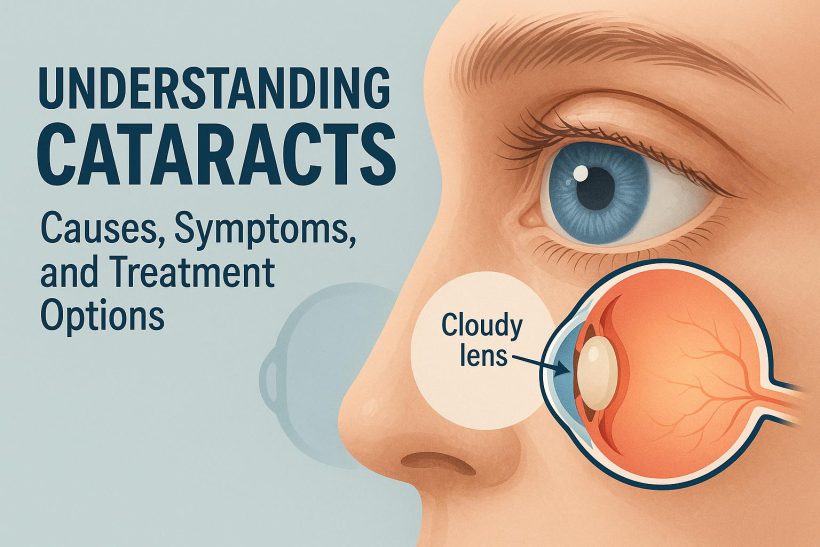Cataracts affect millions of Americans every year. They occur when the natural lens of the eye becomes cloudy. This clouding makes vision blurry or dull. Most cataracts develop slowly. You might not notice changes at first. Over time, they can interfere with daily activities.
What Causes Cataracts?
Aging is the most common cause. As you grow older, proteins in the lens break down. This leads to clumps that cloud part of the lens. Other factors include:
- Diabetes. High blood sugar can speed cataract formation.
- Smoking. Tobacco use increases oxidative stress in the eye.
- UV Exposure. Long-term sun exposure harms eye proteins.
- Trauma. A past eye injury can trigger early cataracts.
- Medications. Long-term use of steroids may raise risk.
Recognizing the Symptoms
Early cataract symptoms can be subtle. They tend to worsen over time. Look out for:
- Blurred Vision. Things look foggy or dim.
- Glare. Headlights or sunlight cause halos.
- Poor Night Vision. Driving at night feels hard.
- Faded Colors. Colors seem less vibrant.
- Frequent Prescription Changes. Glasses or contacts need updates.
If you notice any of these signs, schedule an eye exam.
How Are Cataracts Diagnosed?
During the cataract consultation, the eye doctor uses a slit lamp to check the lens. This tool shines a light into the eye. It lets the doctor see cloudiness up close. Next, a retinal exam checks the back of the eye. The doctor may dilate your pupils first. These tests confirm the presence and severity of cataracts.
Treatment Options
At first, new glasses or brighter lights may help. If vision remains clear, surgery may not be needed. When cataracts affect quality of life, surgery is the only cure. It is one of the safest operations in medicine.
Cataract Surgery Overview
In cataract surgery, the cloudy lens is removed. It is replaced with a clear artificial lens called an intraocular lens (IOL). The procedure takes about 15 to 30 minutes. You go home the same day. Most patients see better within a few days.
Types of IOLs
- Monofocal IOLs. Provide clear vision at one distance.
- Multifocal IOLs. Offer focus at near and far distances.
- Toric IOLs. Correct astigmatism and improve clarity.
Your eye doctor will help you choose the best option.
Preventing Cataracts
You cannot stop age from advancing. You can lower other risks, though. To protect your eyes:
- Wear Sunglasses. Choose ones that block UV rays.
- Quit Smoking. Seek help if you need to.
- Manage Health Conditions. Keep diabetes under control.
- Eat a Healthy Diet. Include leafy greens and fish.
- Get Regular Eye Exams. Early detection matters.
Ready for Clear Vision?
If blurry vision or glare holds you back, take action today. Schedule a consultation with a trusted eye doctor to learn how cataract surgery can restore your sight. Eduardo Besser, MD, is known as one of the best cataract surgeons in LA. He uses advanced techniques and the latest lenses. His patients benefit from personalized care and clear outcomes. His practice is committed to safety and comfort. Begin your journey to better vision now!
Laila Azzahra is a professional writer and blogger that loves to write about technology, business, entertainment, science, and health.
